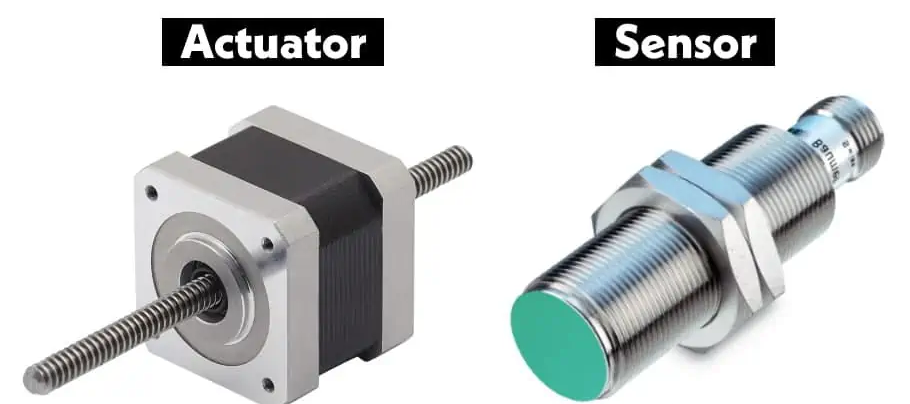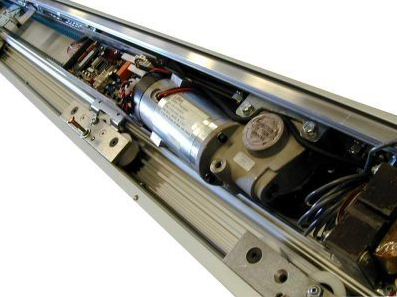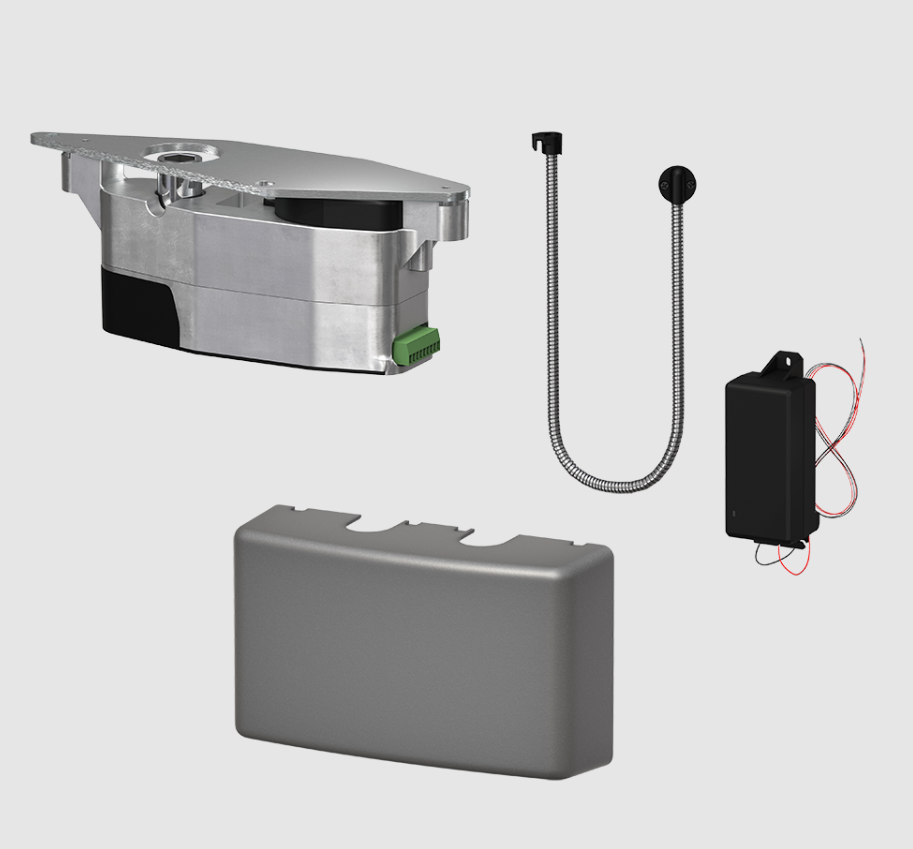Infrared, ultrasonic, microwave, and laser sensors work alongside electric motors, hydraulic, and pneumatic systems to operate automatic doors efficiently.
Types of Automatic Doors
Sliding Doors
Sliding doors are perhaps the most commonly encountered type of automatic door. They usually consist of two door panels—one fixed and one mobile—that slide horizontally.
Components
Sensors: Often use infrared sensors or microwave sensors to detect motion or presence.
Actuators: Typically employ electric motors to slide the door horizontally.
Advantages
Efficient use of space
Quick and easy to use
Suitable for high-traffic areas like airports and malls

Swing Doors
Swing doors are similar to standard hinged doors, but they open and close automatically. These doors are prevalent in residential buildings and small commercial settings.
Components
Sensors: Commonly use ultrasonic or infrared sensors for motion detection.
Actuators: Hydraulic systems or electric motors are typically used.
Advantages
More conventional appearance
Ideal for places with less foot traffic
Can easily be manually operated if needed
Revolving Doors
Revolving doors consist of several leaves that rotate around a central axis. These doors are particularly useful in maintaining indoor climates and are frequently seen in large corporate buildings or hotels.
Components
Sensors: Often equipped with laser sensors for precise operation.
Actuators: Electric motors usually facilitate the revolving action.
Advantages
Energy-efficient as they prevent drafts
Can handle multiple people at once
Adds aesthetic value to the building
Telescopic Doors
Telescopic doors have multiple sliding panels that neatly tuck into each other when the door opens, providing a wider opening in a more limited space.
Components
Sensors: May use a combination of infrared and ultrasonic sensors for enhanced sensitivity.
Actuators: Electric motors are almost exclusively used for telescopic doors.
Advantages
Provide a wider opening without requiring more space
Modern and high-tech appearance
Suited for both commercial and residential use where space is limited
Overview of Sensors in Automatic Doors
Sensors serve as the eyes and ears of automatic doors, ensuring that they open and close when needed, without causing inconvenience or harm. Various types of sensors with distinct mechanisms and functionalities are used in automatic doors.
Infrared Sensors
Infrared sensors mainly rely on infrared light waves to detect the presence or absence of an object. These are particularly effective in detecting warm bodies.
Components and Working
Emitter: Sends out infrared signals.
Receiver: Captures the reflected signals.
Microcontroller: Processes the signal to decide whether the door should open or close.
Advantages
Highly sensitive to heat
Generally low cost
Can work in various light conditions
Ultrasonic Sensors
Ultrasonic sensors use sound waves above the range of human hearing to detect objects or movement. These sensors often find application in environments where light-based sensors are less effective.
Components and Working
Transducer: Sends out high-frequency sound waves.
Echo receiver: Captures the reflected sound waves.
Processor: Compares the sent and received signals to make decisions.
Advantages
Effective in dim or highly lit environments
Can detect objects made of various materials
Highly accurate over short distances
Microwave Sensors
Microwave sensors use electromagnetic waves to detect motion or objects. These sensors have a longer range and can penetrate through walls and glass.
Components and Working
Transmitter: Emits microwave signals.
Receiver: Captures the reflected signals.
Digital Signal Processor: Interprets the received data to actuate the door.
Advantages
Long-range capability
Ability to see through some materials
Suitable for large and open spaces
Laser Sensors
Laser sensors employ a laser beam to detect objects or movement. These sensors are highly accurate and can measure the distance between the sensor and the object.
Components and Working
Laser Emitter: Sends out a focused laser beam.
Photodetector: Receives the reflected laser light.
Processor: Analyzes the data to determine distance and presence.
Advantages
Highly accurate
Can work over long distances
Suitable for specialized applications requiring precision

Overview of Actuators in Automatic Doors
Actuators are the muscles of an automatic door system, performing the crucial task of moving the doors based on signals from the sensors. Various types of actuators exist, each with their unique features, applications, and operational mechanisms.
Electric Motors
Electric motors are the most common actuators found in automatic doors, especially in sliding and telescopic types.
Components and Working
Motor unit: Converts electrical energy into mechanical movement.
Gear system: Increases torque for smoother and more efficient operation.
Control Unit: Dictates the speed, direction, and extent of movement based on sensor inputs.
Advantages
Highly efficient
Versatile and adaptable
Easy to install and maintain
Hydraulic Systems
Hydraulic systems usually appear in heavy-duty and high-traffic applications, often in swing doors and sometimes in sliding doors.
Components and Working
Hydraulic pump: Creates pressure in the hydraulic fluid.
Actuator cylinder: Converts hydraulic pressure into mechanical movement.
Valves: Control the flow and direction of hydraulic fluid.
Advantages
High force and torque
Durable and long-lasting
Efficient energy transfer

Pneumatic Systems
Pneumatic systems use compressed air to generate motion, and they’re often used in lighter applications like small swing doors or specialized medical facilities.
Components and Working
Air compressor: Generates compressed air.
Pneumatic cylinder: Converts air pressure into linear or rotational motion.
Regulator: Maintains consistent air pressure for smooth operation.
Advantages
Light and compact
Quick response time
Ideal for clean environments like medical facilities
Sensor-Actuator Integration
The seamless integration of sensors and actuators is vital for the efficient operation of automatic doors. This involves hardware compatibility, software intelligence, and energy management. Each element is critical in ensuring that the doors function as expected, safely and reliably.
Hardware Integration
In the context of hardware, the integration involves establishing the physical connections between sensors and actuators.
Components and Working
Wiring: Connects the sensor outputs to the actuator inputs.
Circuit Boards: Host the electrical components and establish pathways for electrical currents.
Microcontrollers: Serve as the processing center to interpret sensor data and instruct the actuators.
Advantages
Enables quick response times
Simplifies troubleshooting
Facilitates modular upgrades
Software Integration
Software plays an essential role in interpreting the data from sensors and turning it into actionable tasks for the actuators.
Components and Working
Firmware: The embedded software that operates the sensors and actuators.
Logic Algorithms: Determine the conditions under which the doors should open, close, or remain static.
User Interface: Allows manual control and monitoring of the system.
Advantages
Enables smart features like traffic analysis and energy-saving modes
Makes the system adaptable to different environments
Provides a platform for future updates and features

Energy Management
Managing the energy consumption of the entire automatic door system is crucial for sustainability and operational efficiency.
Components and Working
Power Supply: Ensures consistent electrical power to both sensors and actuators.
Energy Monitors: Keep track of energy consumption.
Battery Backup: Provides power in case of outages.
Advantages
Reduces operational costs
Minimizes environmental impact
Increases system reliability during power outages
